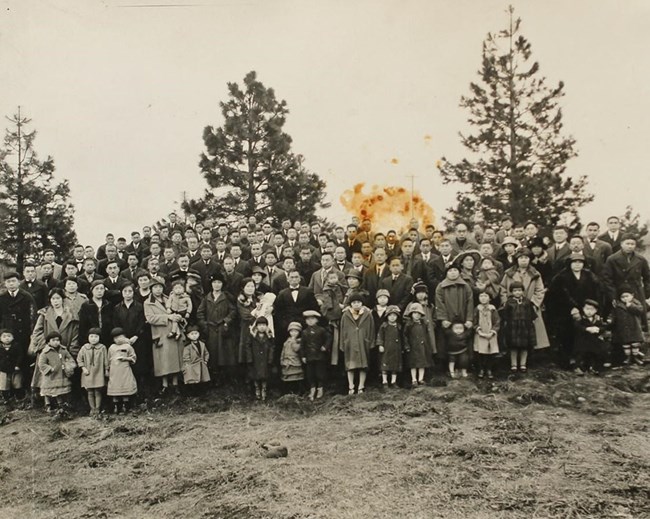
Yasui Family Collection The success of the Japanese immigrants enticed state Senator George Wilbur to introduce Oregon’s first alien land bill, which would prevent Nikkei (people of Japanese ancestry) from buying and owning property. This bill would pass in 19232. Later, locals also formed an Anti-Alien Association, vowing to neither sell nor lease land to Asians. Despite the opposition they faced, Nikkei were becoming successful and enviable farmers. Hood River is notorious for their incident involving Nisei soldiers who served in the 442nd Regimental Combat Team during World War II. The local American Legion Post erected a memorial for the men in the community who were serving in the war. This included the Japanese American men who were forcibly removed and sent to Minidoka. Immediately following Pearl Harbor, Japanese Americans were declared to be “ineligible for military service,” until 1943 when they were allowed to volunteer to serve in a segregated unit. On Nov. 29, 1944, Legion Post No. 22 removed the names of the Japanese Americans who were serving in the war. They argued that they did so because the men were dual citizens of Japan and the United States. The names were eventually restored, but that did not stop the Hood River Valley from trying to prevent Japanese Americans to return to the area after the war3. Racism against Japanese Americans returning to the area continued. American Legionnaire, Kent Shoemaker wrote a series of public notices that appeared in the newspapers with titles such as, “So Sorry Please, Japs are Not Wanted in Hood River” with lists of Japanese landowners and their properties to entice the white community to purchase their properties. Those who did return to the area faced extreme harassment and racism despite the fact that many had no other place to go after the war4. 1Linda Tamura. Nisei Soldiers Break Their Silence: Coming Home to Hood River (Seattle: University of Washington Press, 2012), 22. 2Tamura, "The Enemy's Our Cousin: Pacific Northwest Nisei in the United States Military Intelligence Service," Columbia, (Spring 2006), 17 3Linda Tamura. "'Wrong Face, Wrong Name': The Return of Japanese American Veterans to Hood River, Oregon, after World War II" in Sucheng Chan, ed., Remapping Asian American History, Walnut Creek, CA: Alta Mira Press), 112. 4Tamura, Nisei Soldiers, 151-53. |
Last updated: September 3, 2019
